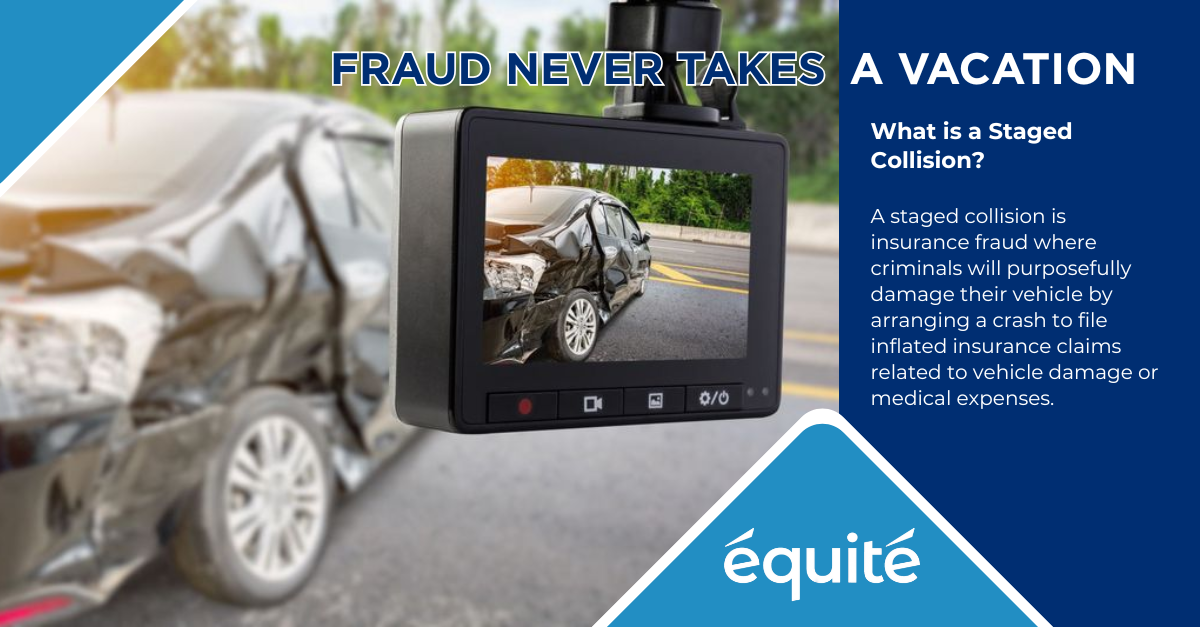

Fraud never takes a vacation, which is why this summer Équité Association is raising awareness about emerging insurance fraud trends. Équité’s 2025 First Half Auto Theft Trend Report revealed that criminals continue to evolve their tactics to identify new funding opportunities in vehicle crime; resulting in 44% of private passenger vehicles stolen this year nationally unrecovered. Fraud always has a victim, through this awareness campaign, Équité and its property and casualty members, are helping to fight against insurance fraud and keep Canadians safe.
What is a Staged Collision?
A staged collision is insurance fraud where criminals will purposefully damage their vehicle by arranging a crash to file inflated insurance claims related to vehicle damage (unnecessary body shop work) or medical expenses (exaggerated personal injury claims).
What Makes Staged Collisions So Dangerous?
Investigators are getting so good at uncovering this type of scam that criminals have escalated to purposefully crashing into innocent drivers to cause a real accident. The risk of injury to the occupants of the other vehicle, as well as innocent bystanders is significant in these cases. Fraud impacts everyone, and this scam puts innocent drivers, and their passengers, at risk.
How to Identify a Staged Collision
Staged collisions can be difficult to detect, and therefore are often difficult to prevent, however, by understanding different types of staged collisions used by criminals, drivers may be able to mitigate becoming a victim. Some types of staged collisions include:
In all of the above schemes, the criminal will claim the accident was the victim’s fault.
Fraud Party: A fraud party is when multiple people are involved in the plan to commit a staged collision and pose as extra passengers in the vehicle. If occupants were not in the vehicle at the time of impact, they are known as jump-ins. Drivers and passengers involved in a “fraud party” may submit false claims for:
What is being done about staged collisions?
Équité shares information lawfully with law enforcement and regulators looking to identify criminals as well as suspicious organizations within the auto industry and hold them accountable. Équité leverages best-in-class technology, coupled with investigations and expertise to better identify suspicious activities and to remain responsive to emerging fraud trends.
On behalf of Canadian property and casualty insurers, Équité combats insurance crime by deploying advanced analytics, intelligence best practices, and coordinated investigations. Follow this campaign and future awareness articles on LinkedIn, @Équité Association and equiteassociation.com. To report information about insurance crime by phone (available 24/7), please call 1-877-422-TIPS (English) or 1-866-422-4331 (service en français). If you would like to remain anonymous, please call our partners at Crime Stoppers (available 24/7) at 1-800-222-TIPS.